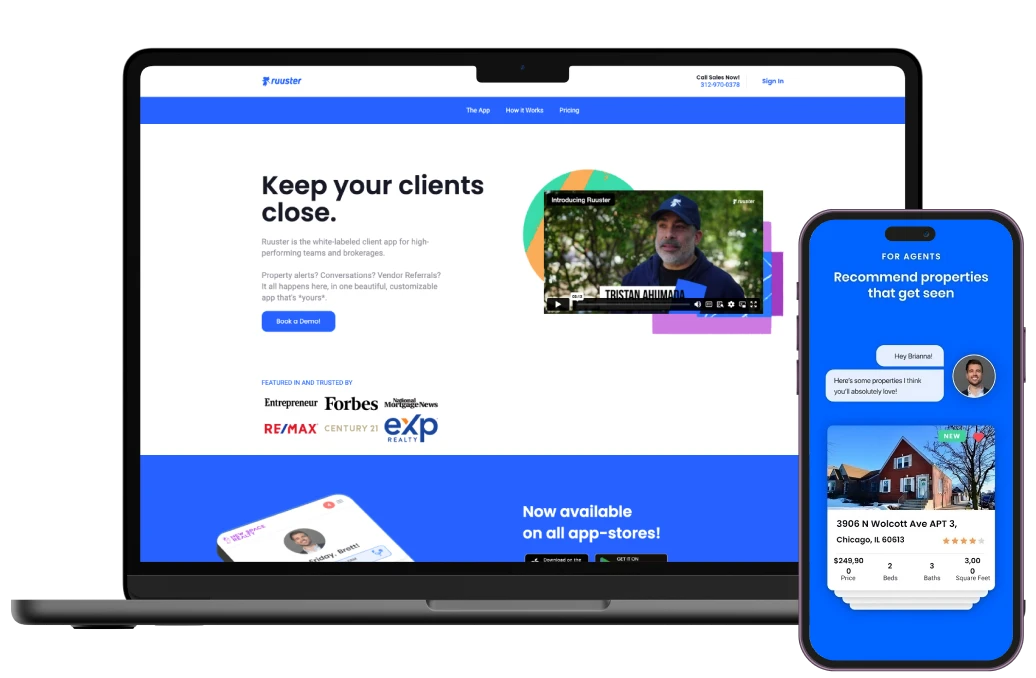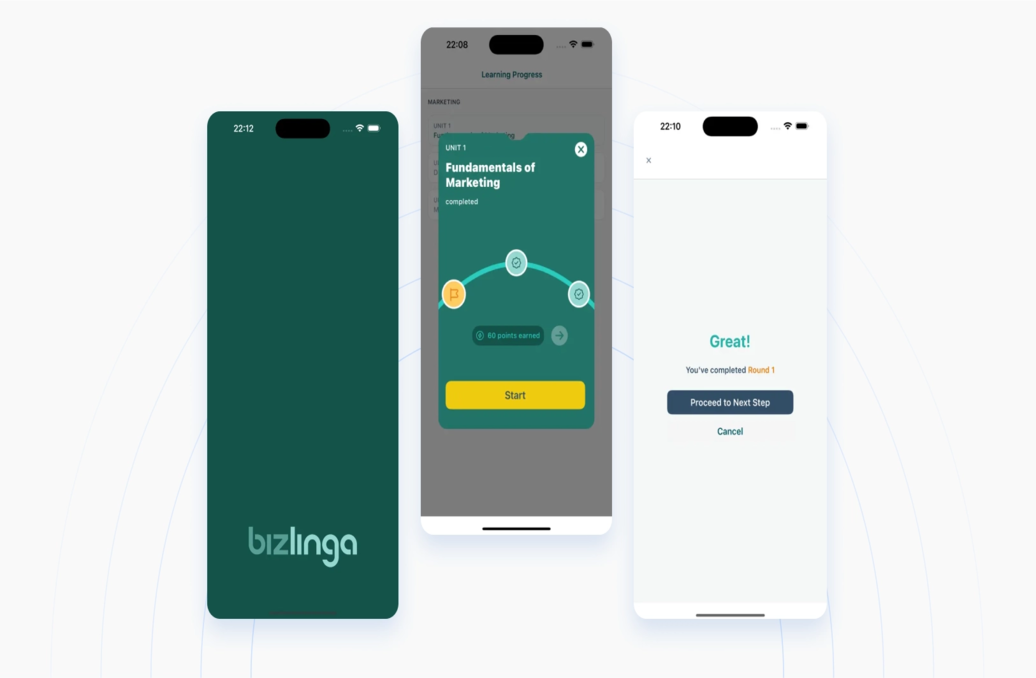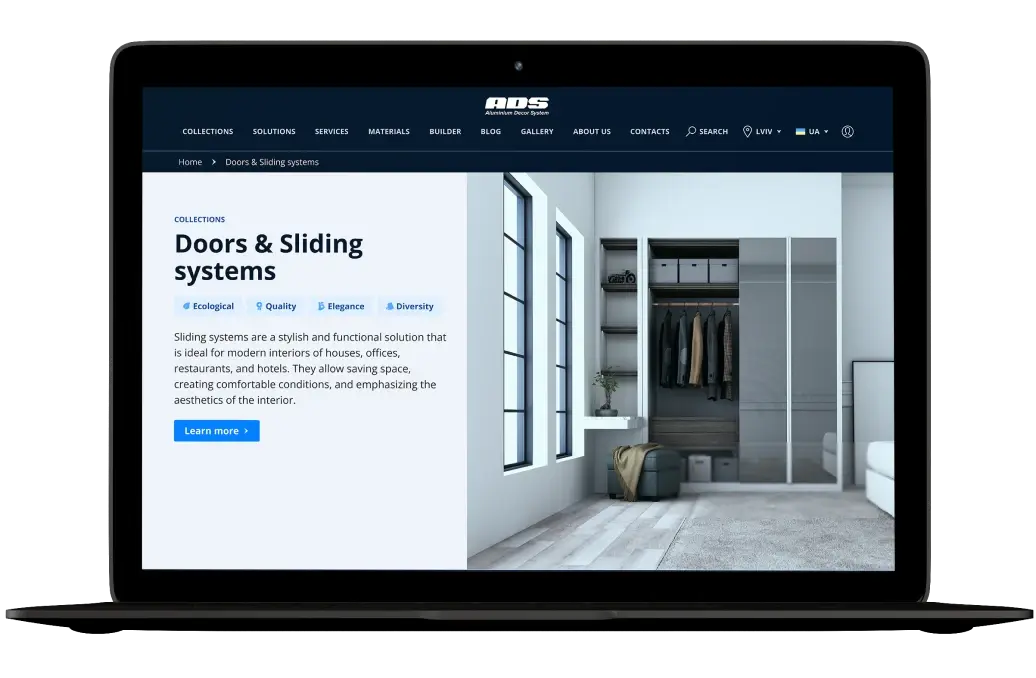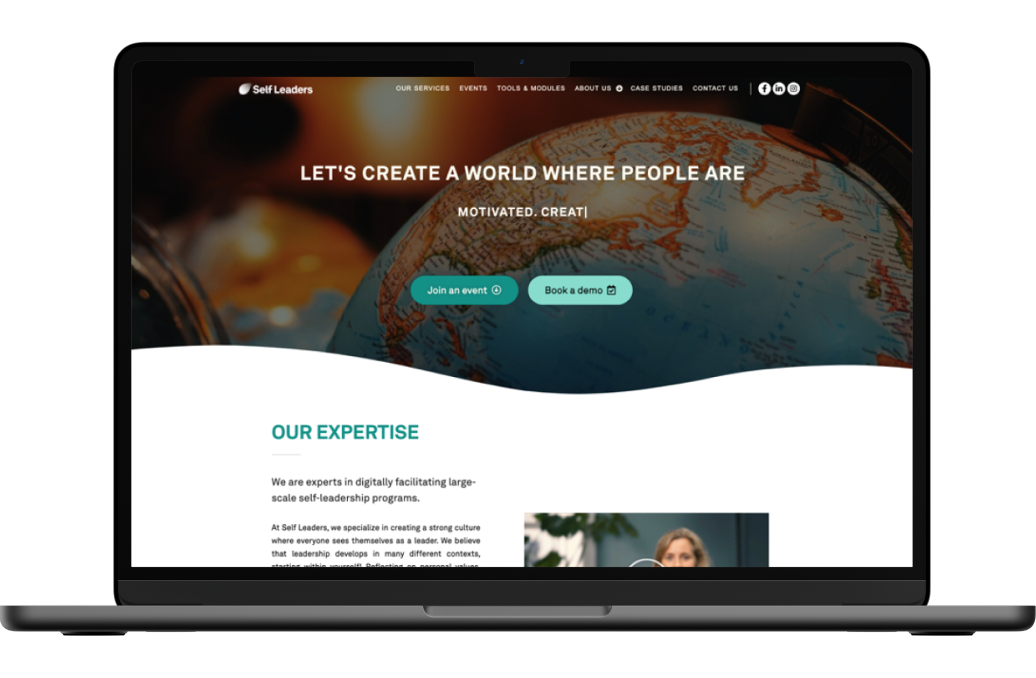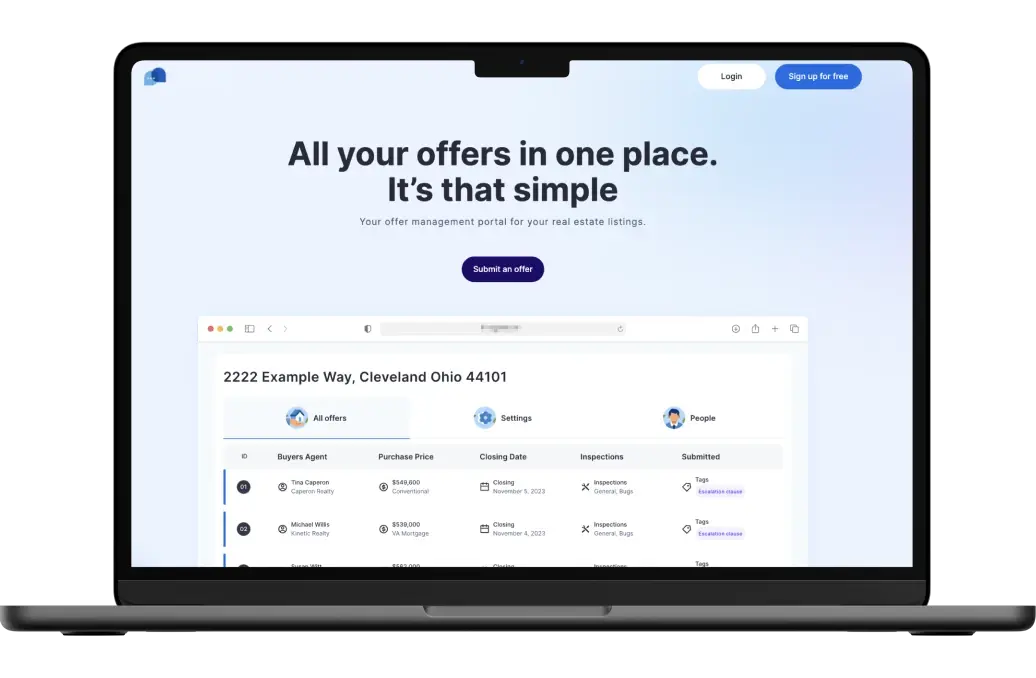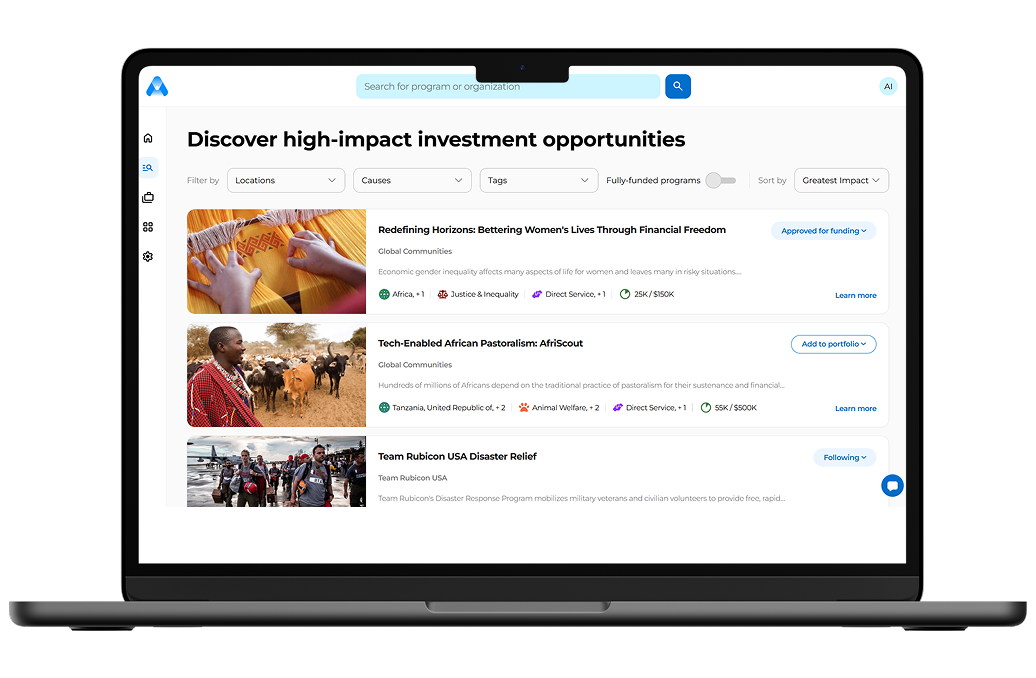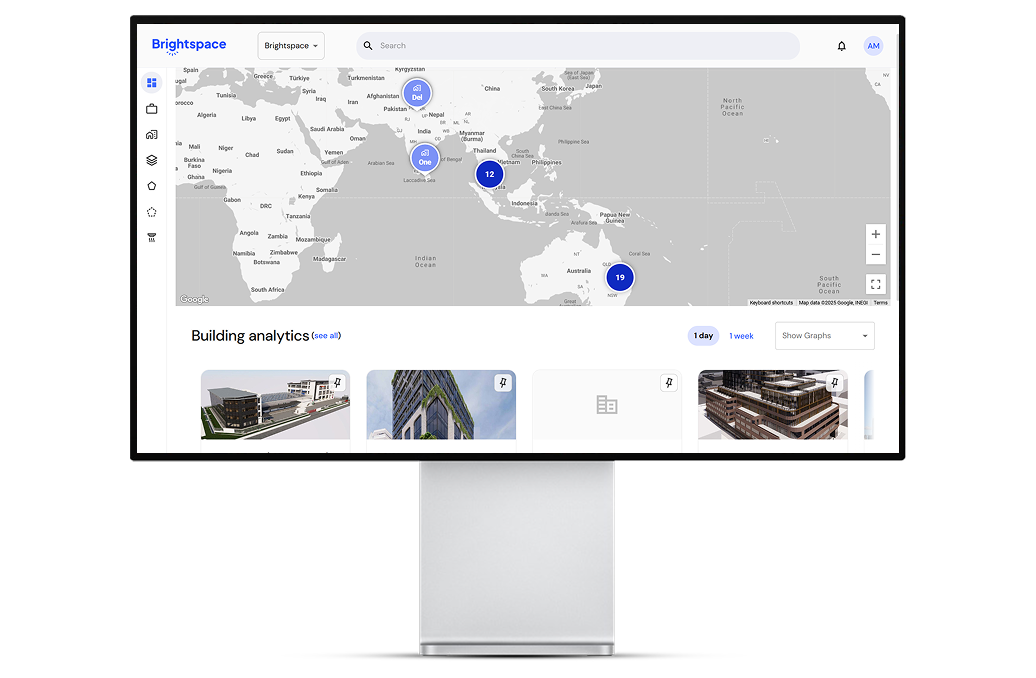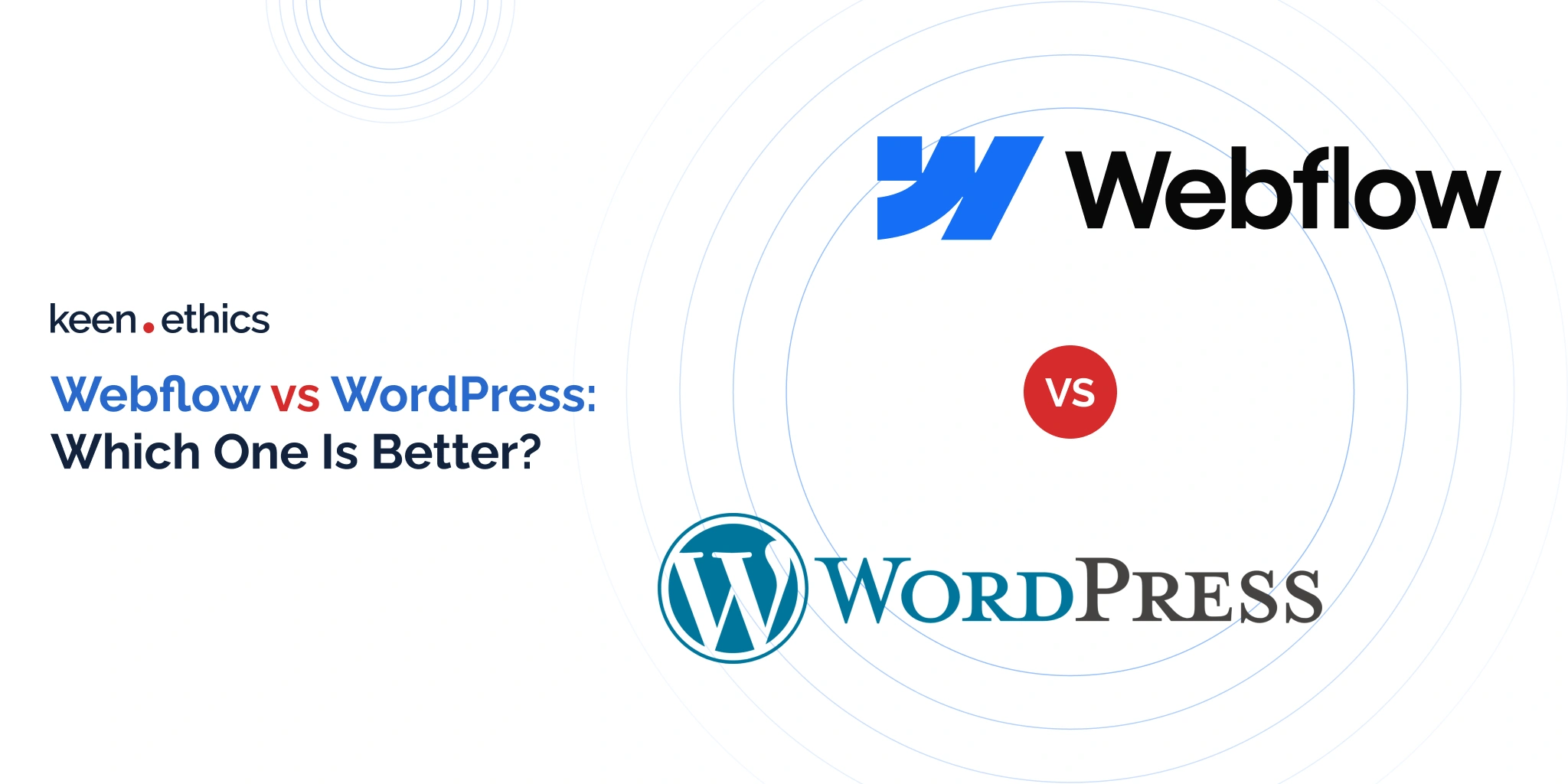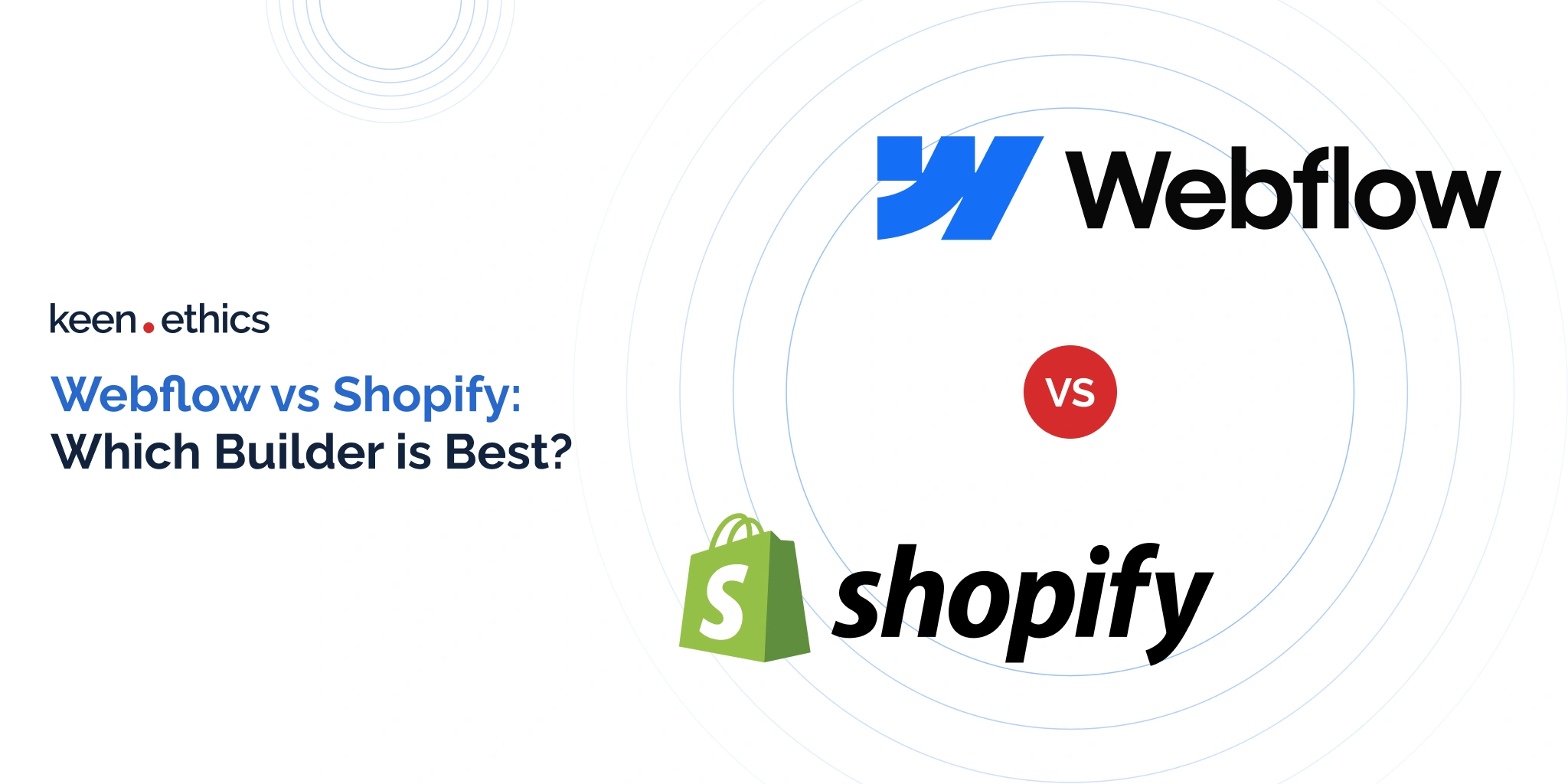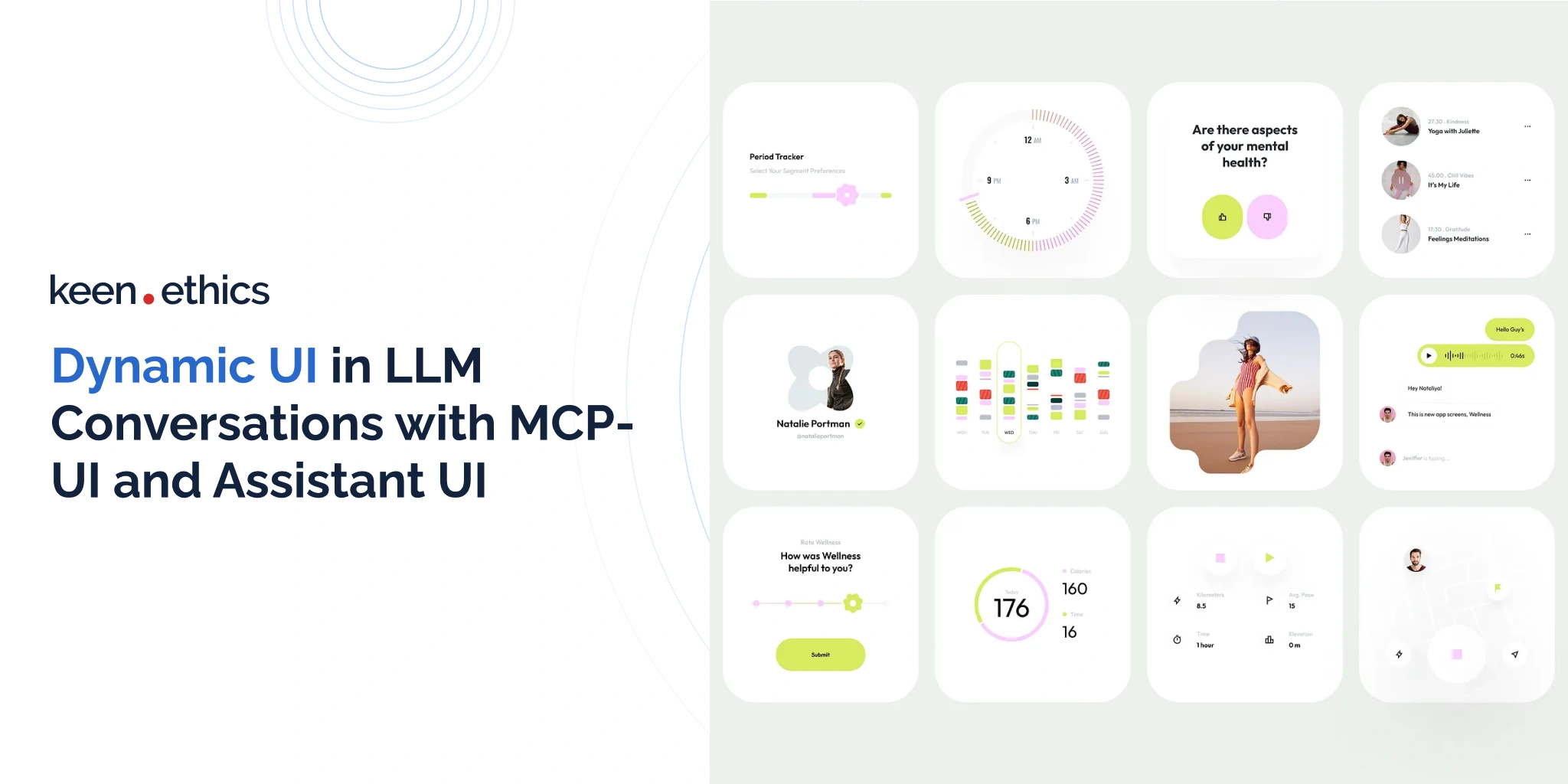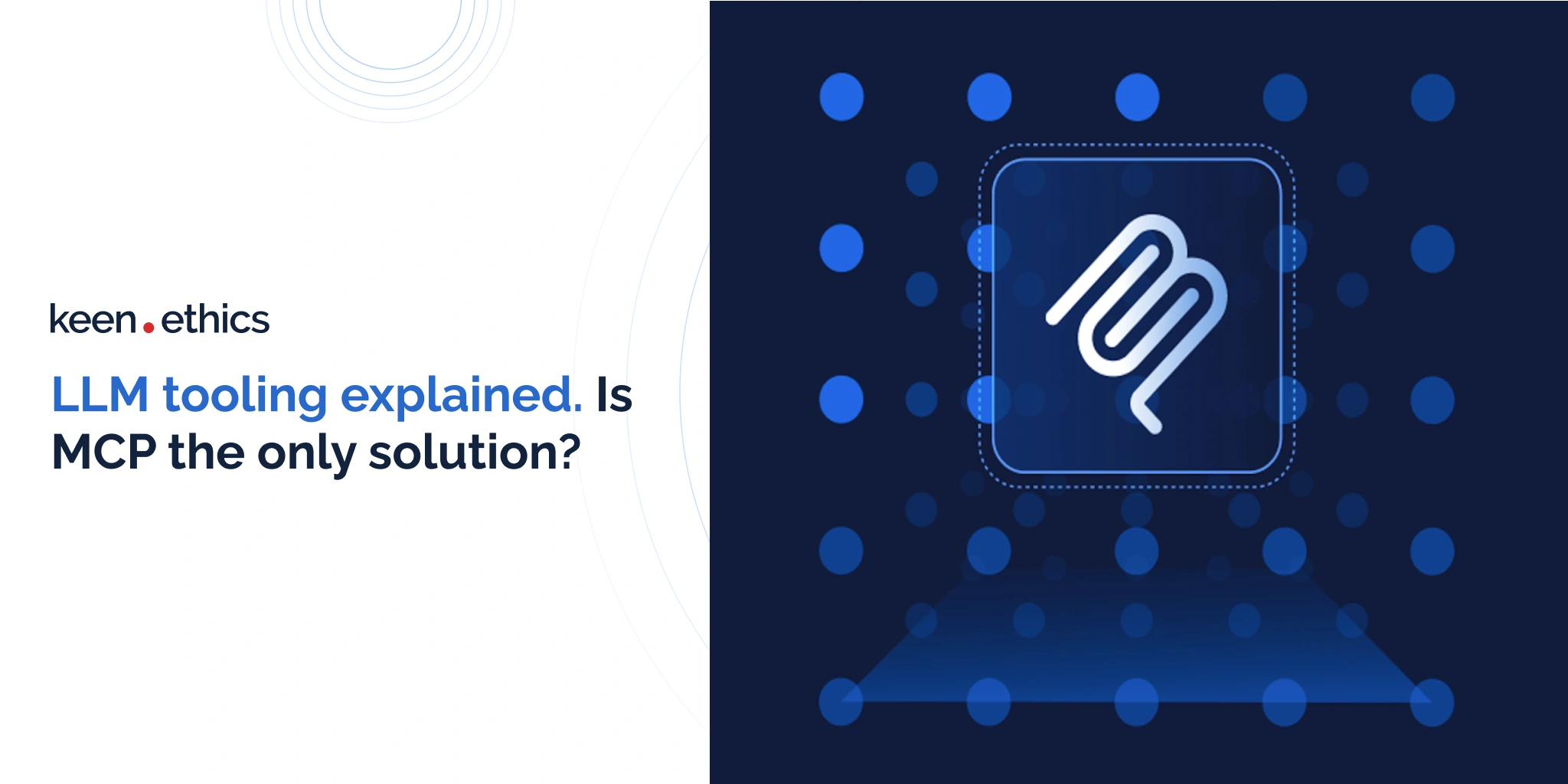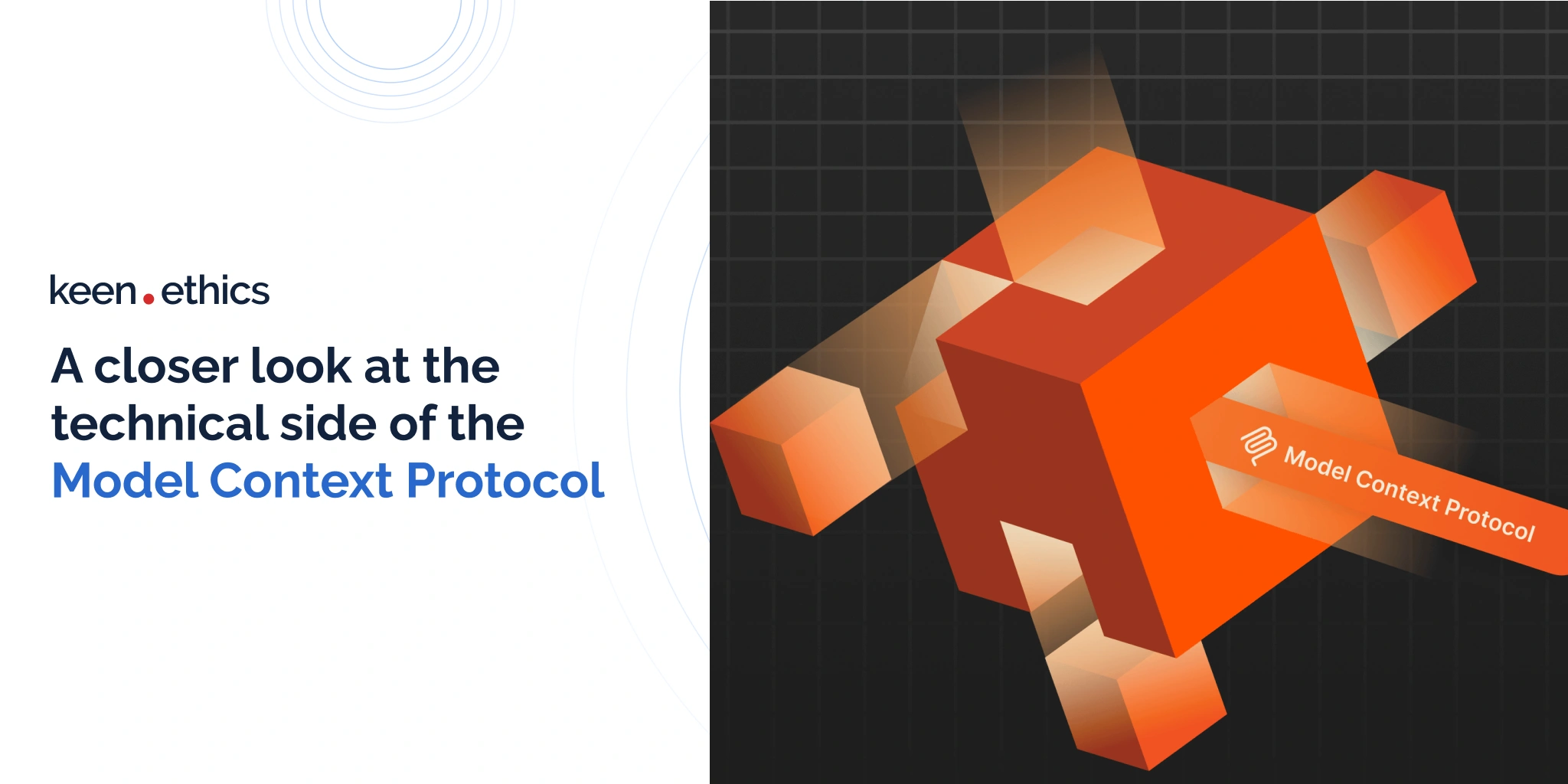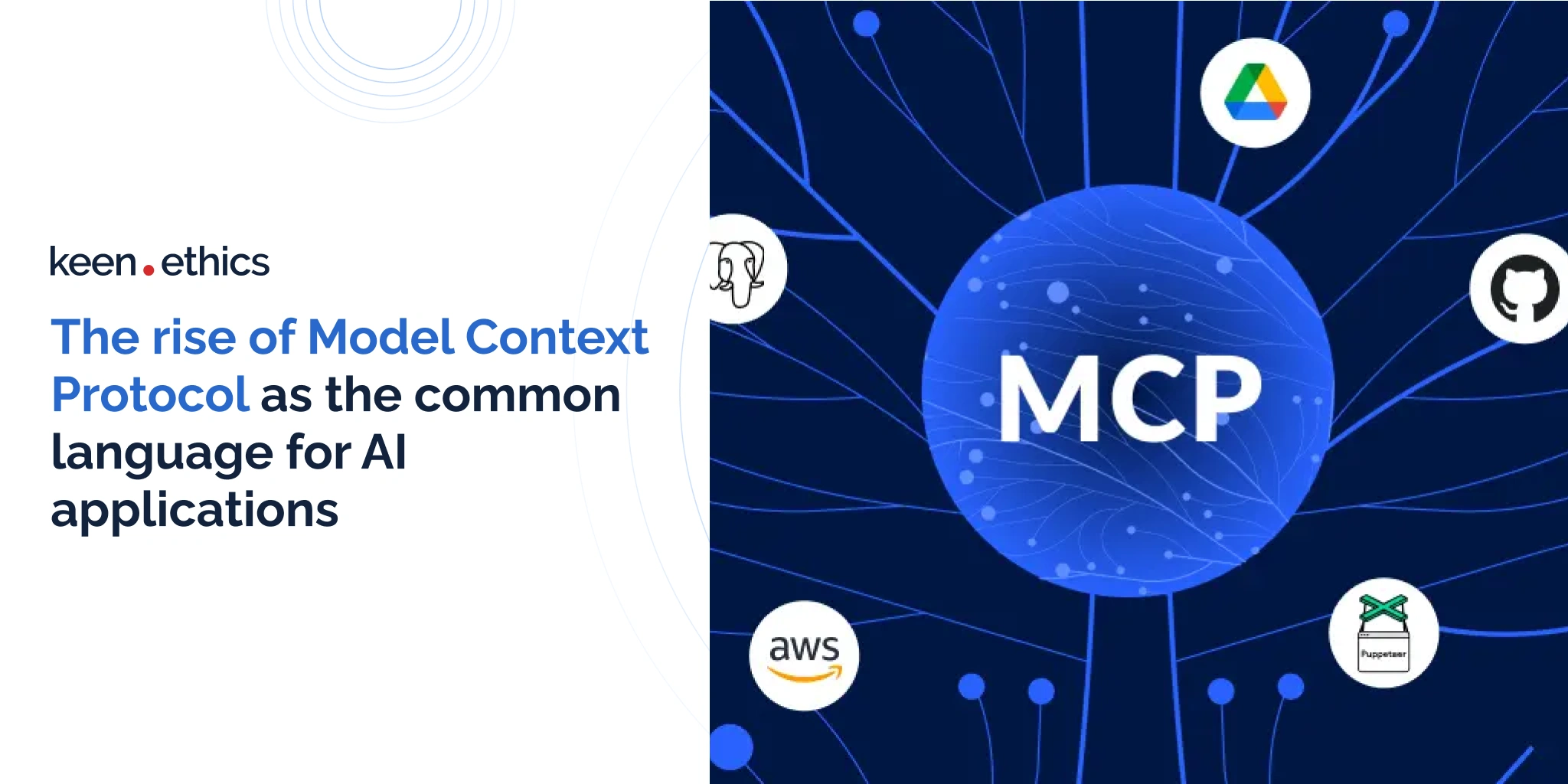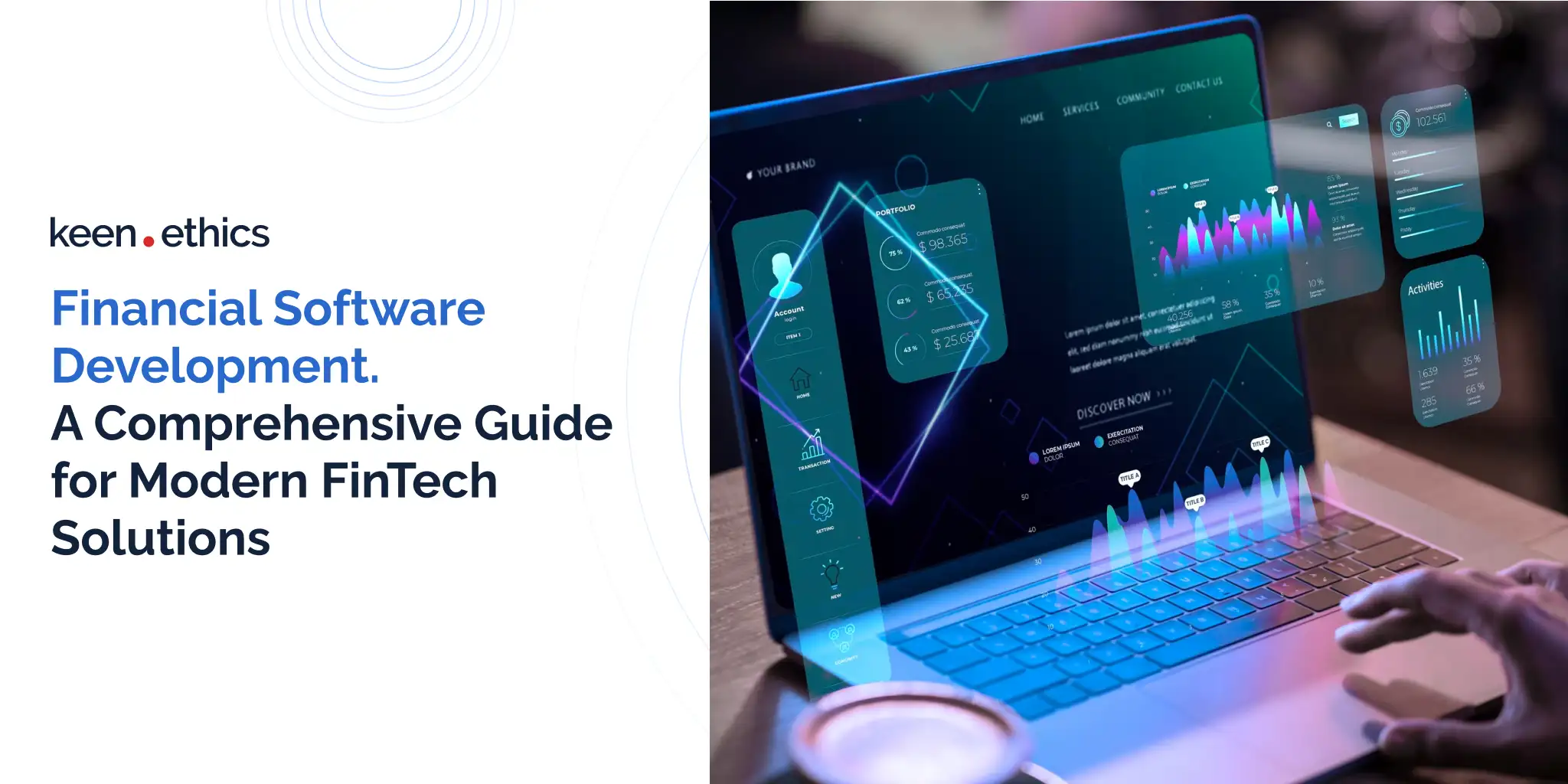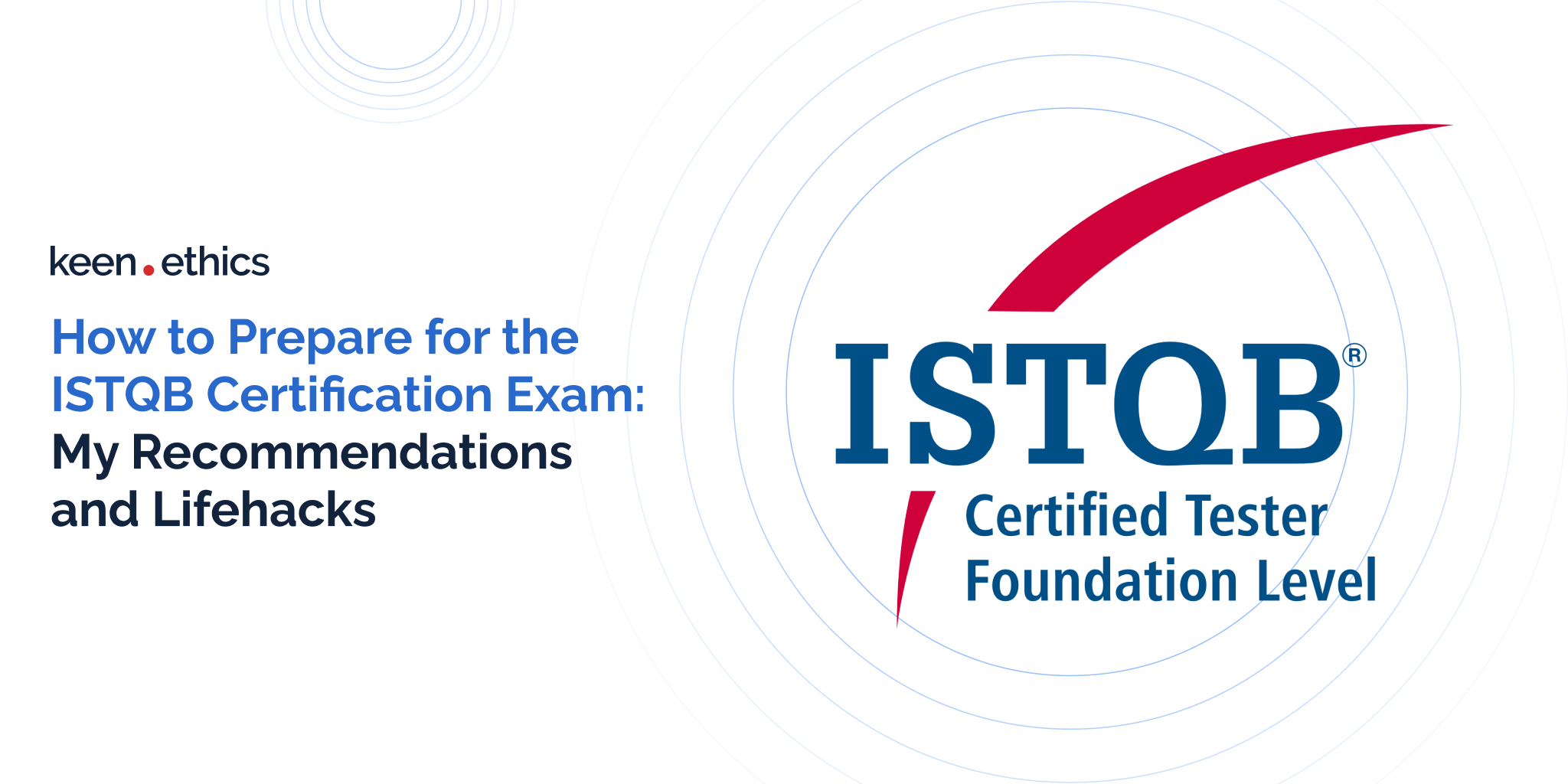Learning management system represents a vital element of improvement for many companies. One of the key advantages is the opportunity to advance the existing company capabilities. In this article, we’ll examine all types of LMSs and the key features they can deliver for an average business. As you’ll see, the learning management system development can be crucial for your profits. It’s a perfect path to improve one’s company through training courses.
Types of LMS
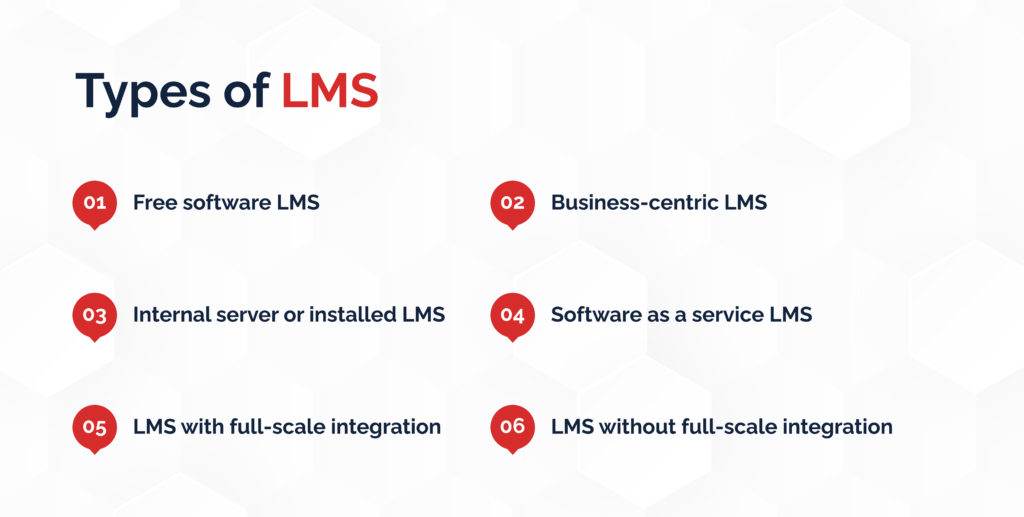
LMS development involves several subtypes. We don’t have an exact typology but some of the key features appear below. What are those? Let’s look:
Free software LMS
LMS based on open-source technology is common today. Several platforms use such a framework for supporting learning content. In our opinion, using the free software LMS is often a good idea. Many frameworks of this type are perfect if you don’t need a big solution. So the answer isn’t always pessimistic regarding the question “How much does it cost to develop an LMS?”. Sometimes, such systems are cheap. The open-source choice may require greater attention from the internal workers of your company. Thus, you should use this deployment model only if there’s a person ready to dedicate at least some of their time to managing some outsider framework.
Business-centric LMS
Some LMS products belong to particular companies. These solutions are usually commercial and you have to pay a full-scale license for them. LMS development in such cases, however, is more professional. Open-source and free software solutions usually come from enthusiasts. These frameworks are a result of significant centralized effort. Many of them also have strong support. Open-source users have to contact the creators of particular programs or their communities. In cases of commercial LMS, you can expect full-scale assistance with everything. Regarding small cases, using such systems for training employees likely makes no sense. License agreements are usually very demanding price-wise. But if you need something big, commercial frameworks are definitely your best choice. It’s always useful to have a dedicated team of professionals helping you with every aspect of your work.
Internal server or installed LMS
Certain LMS products use internal servers as a basis. For example, you can install such frameworks on the computers of your company and share them within your office. This method has both some positives and downsides. On the one hand, LMS based on internal servers is more secure. You have full control over the systems in question and can close them from any type of external tampering. On the other hand, there’s also a big problem with scaling such frameworks. Hosting them on the internal servers of a company for sharing between several offices makes no sense. You lose the security aspect (unless there are massive investments) and have to consider a big flow of data. Therefore, we see this solution as something positive for small offices. If you need to create a confidential system for a minuscule team, such an LMS is a perfect choice.
Software as a service LMS
A big option is to also use solutions based on the web. At least several companies offer LMS frameworks that don’t require any installation. In this regard, they present all functions on some websites. As a result, you don’t have to think about how to develop LMS. Storage is less of a concern for you too. The usage of the frameworks is highly simple: a client has to pay on a periodic basis to get access to the service. There, you can store large sets of information that are perfect for training particular individuals. Regarding positives, this option has no development costs. It doesn’t require you to set up anything. You can upload the courses and do formatting without preparing a full-scale software and hardware basis.
Nonetheless, there’s also a big problem. Systems of this kind aren’t under your control. If a company closes, you often don’t even have an option of saving the original software on your servers. All training material can easily perish with such a framework. Hence, modern decision-makers should be careful with promoting them in big business. We see these solutions as positive for small and medium business that doesn’t deliver any confidential information via such services. Big business needs a more independent solution to ensure security.
LMS with full-scale integration
Learning management system development often includes the need to focus on the system architecture. Integrated LMS frameworks are self-sufficient. Let’s imagine a platform for learning content writing. In an integrated framework, all the key training programs have native elements. For example, if you intend to teach touch typing and proper grammar structures, your system may have its training module for the keyboard and a full-scale testing block for language tasks. This information means such systems offer their owners full control over all tools they have. An integrated LMS is usually much more expensive than other solutions. It’s also likely to be custom-built. However, the benefit of the system is overwhelming: it makes you fully independent. For many firms working with confidential information, this aspect alone can have overwhelming strength.
LMS without full-scale integration
A big aspect of learning management system development is the flexibility of such frameworks. You can try creating a universal system that includes original solutions for everything. But it’s also possible to deliver systems relying on other programs. It isn’t always practical to create everything from scratch. Why reinvent the wheel if the market already offers a wide set of solutions? For example, some firms can indeed try creating even their VOIP solutions for LMS. This choice isn’t practical for everyone, as you may guess. Many companies are simply too small for such business goals. Others don’t offer information that can be overly harmful to the clients.
In this light, it’s easier to create a mixture of your own platforms or something you rent from a SaaS firm with some other products. A teaching platform with lectures can easily rely on Google Meet or even Skype for communication between students and teachers. Many companies are also willing to use Google Drive for storing the learning materials and even the full projects of the students. This option makes you more dependent on outside factors, indeed. A company can close, disrupting your system: even Google will fall one day. Simultaneously, you also don’t rely on one solution. More importantly, a mixture of services (especially if some of them are free) can save you a lot of funds. Such learning management system development is often perfect for small companies that need basic features, want to save funds, and strive to avoid experiments.
How do server and cloud LMSs differ?
Server and cloud LMSs may seem to be quite similar but, in reality, they represent very different use cases. This difference has a great influence on the question of how to build a Learning Management System.
Server-based LMSs
Server-based LMSs are often called on-premise frameworks. One of their core features is the use of an internal server that belongs to the host of an LMS. This approach is popular among two types of organizations. On the one hand, it’s great when you work with a relatively small audience. On the other hand, full control over your servers offers more choices in terms of security for the house team. Thus, the method is popular among educational institutions and in corporate training.
Cloud-based LMSs
The preceding approach offers more control, and that’s one of its core problems: one has to take full responsibility for security. More importantly, it’s highly problematic concerning scaling. A server-based LMS can’t support the learning process for numerous people. Consequently, cloud-based LMSs exist to solve this problem. How to build a learning management system that is scalable and outsources the majority of security concerns? The best choice is to go for cloud options. They enable you to provide online courses to a massive audience and prevent the majority of threats such as DDoS attacks. Hence, they’re a go-to option for companies aiming to sell online learning courses.
What Are the Core Applications for LMS Platforms?
It’s not difficult to find information on how to build your LMS from scratch on the Internet. What’s problematic in numerous instances is learning when such systems are useful. Let’s look at some core applications of this technology today:
1) Employee training: when you need to teach employees how to do this or that part of their job, then the essential features of an LMS may be highly useful. LMSs enable the relevant individuals to study from any location, assisting with the absorption of core work-related knowledge despite the combination of studying and everyday work. Educational content in an LMS can target any group you want. It can include sales personnel or, for example, warehouse workers.
2) Client training: a typical product in the supply chain or even the retail market is usually quite complex. Learning how to use its user interface is a time-consuming task. Consequently, one of the must-have features to consider here is an LMS aimed at user feedback. In this regard, you can create a series of training videos that outline how to use the core features of your platforms. You’ll greatly improve your customer engagement by simplifying the discovery phase of a product.
Benefits of LMS
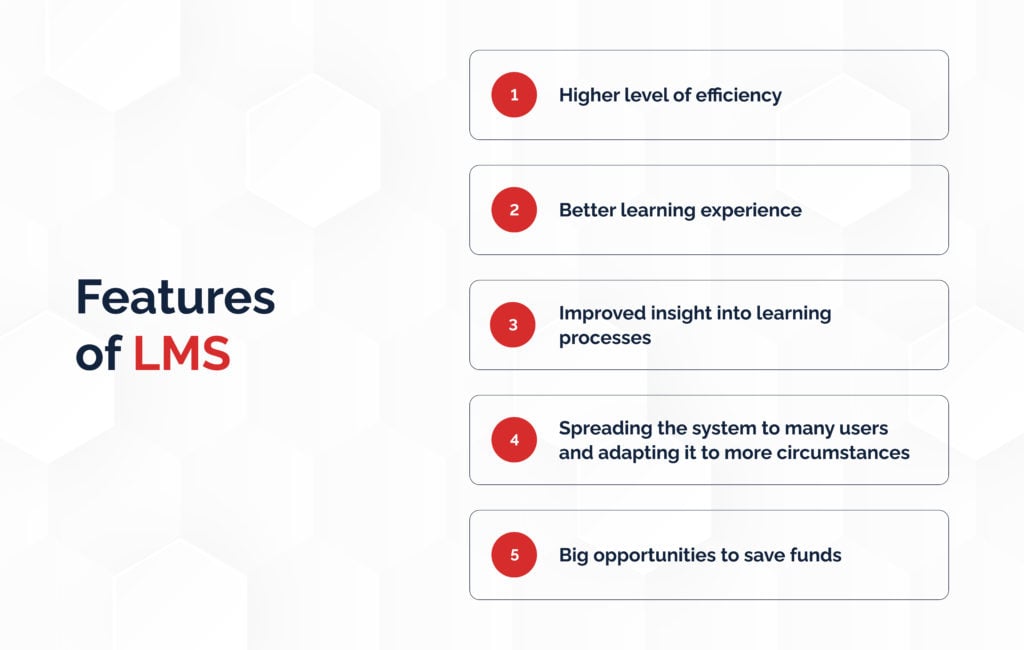
Learning Management Systems have several important features every manager needs to consider. Here are the main things you should always think about while implementing such systems:
1. Higher level of efficiency
LMS offers you a way to save funds on learning. Many companies spend a lot on training. A centralized system makes this process less taxing. LMS automates many routine tasks in the education sector. For example, it’s no longer necessary to personally check all the tests. This fact means you can reroute your funds toward creating better learning materials or hiring more teaching specialists. In short, you can focus on areas requiring creativity.
2. Better learning experience
A problem for many students is the need to collect all learning data and categorize it themselves. Modern learning systems fully resolve this problem. LMS frameworks are simply easier to use: instead of having to spend time writing down notes or even coming to some office for a learning session, the user can find all data in one centralized Internet directory. A good LMS can even offer a full-scale encyclopedia of terms and a collection of educational material, such as books. Consequently, the users may easily optimize their learning patterns and later spend time on something more productive.
3. Improved insight into learning processes
Teaching someone always requires at least some testing. It’s impossible to ensure the efficiency of the studies without control. In the past, teachers had to rely on some written records and their memory for assessing the progress of particular individuals. This process often led to biases and even loss of insights on some learning actions. Certain individuals used gaps in supervision capabilities to cheat. Modern LMS is notable for giving many control options. You can create tests in an almost automatic manner. What’s more, it’s possible to lock the screens of the students and make screenshots of them to prevent cheating. With proper controls, this approach gives you an edge in many cases. The system allows diminishing cheating to the lowest degree and ensures the periodic control of the students.
4. Spreading the system to many users and adapting it to more circumstances
An average teacher or instructor can work with a group of 20-30 people at best without LMS implementation. For something complex, even this number is too high. Certain crafts require constant supervision, limiting the number of students to 5. One of the key problems for many teachers is the presence of routine tasks. Testing and answering some individual questions from the students is time-consuming. LMS resolves this problem. You can send your lectures to millions of people because such systems don’t require any physical presence of the teacher. It’s also possible to work with individuals from several countries in this manner simultaneously. All this makes LMS a strong upgrade to existing systems. You can adapt to big distances and even large-scale catastrophes. Learning management system development gives you a chance to maintain good teaching productivity even during pandemics.
5. Big opportunities to save funds
All this data means you can save a lot with such systems. They give you a chance to automate many routine tasks in your everyday teaching work. You don’t have to review tests and can communicate with multiple people who are physically present in different countries. LMS development is, thus, one of the best investments for any business. The nature of the solution can differ between firms. Some may need integrated options. Others can focus on open sources. Still, one feature is common: you can always save funds with good LMS product deployment.
Core Features of an LMS
If you want to build an LMS, then it’s essential to know what core features it can have. So, how to build a custom Learning Management System? In our opinion, it’s essential to pay attention to the following elements while trying to create your system:
- User-centered configuration
- Ability to create courses
- Tools for managing content
- Configurable tools for assessment and quiz creation
- Instruments for tracking progress
- Tools for communication between users
- Automatic and custom grading and feedback tools
- Personalization options
- Compatibility with all types of mobile platforms
- Data analytics and automated reporting
- Capability to integrate with other services
- Role and access control instruments
- Gamification
- Collaborative learning capabilities
- Compliance tracking
If you want to learn more about this wide range of features, we have an article dedicated to this topic. In it, we outline all those elements in-depth, showing the key details a perfect solution for e-learning needs to focus on.
The Main Reasons for Choosing Custom LMS Development
Many companies offer proprietary LMS frameworks. They can be good in some cases. But, the problem with them is in the general nature of the capabilities. A pre-made commercial or open-source LMS can simply fail to fit all your goals. Custom learning management system development may resolve many of your problems.
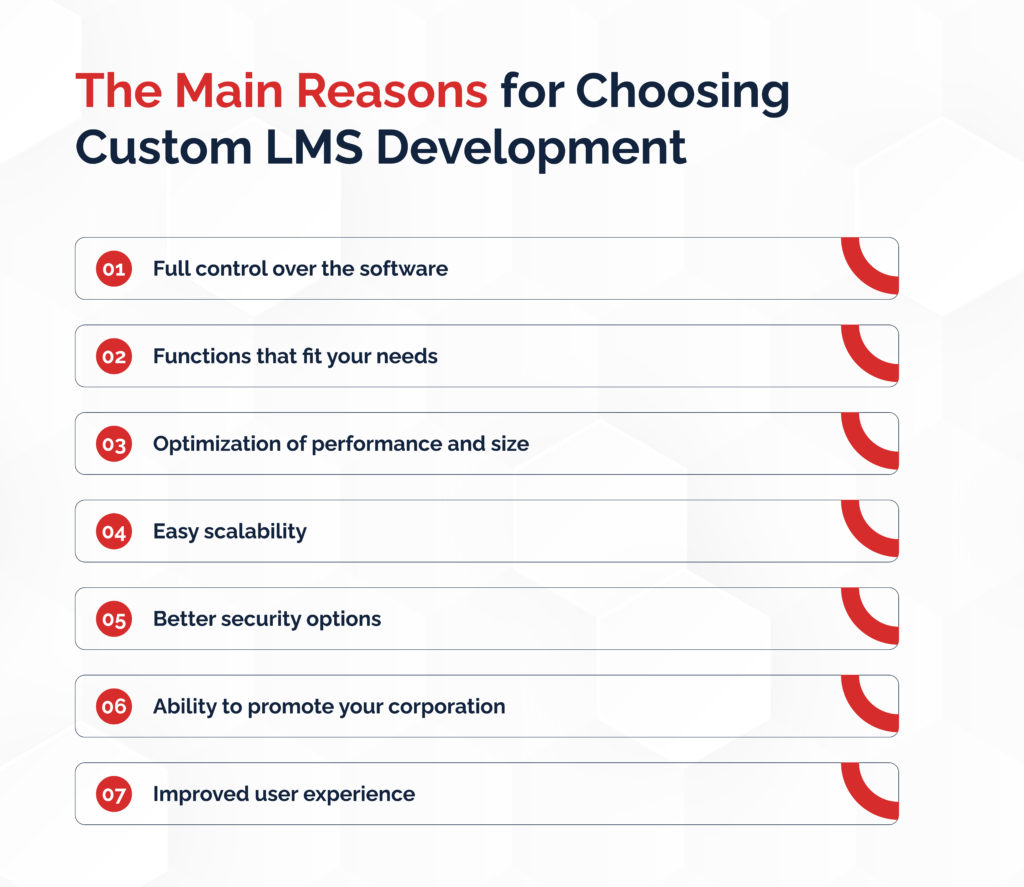
What are the main reasons to use a custom-built system for your business? Here are the key positives to consider:
1. Full control over the software
Proprietary and even open-source software depend on their developers. Many companies fail. Some developers of free products simply lose their enthusiasm. After the abandonment of a project, the users suffer. A custom LMS prevents this problem. You have the full copyright for a program. More importantly, all documentation for the relevant programs is also yours. Knowing the entire development process, you can easily create a dedicated team to solve any future problems. This means that only you can decide whether the project deserves to be closed or not. Custom learning management system development makes you truly independent.
2. Functions that fit your needs
Let us reiterate: no proprietary software can fully cover your goals. Its aim is to cover all facets of the market. As a result, the general solution can fit many users but there’re always some outliers. Your company can easily be among them. LMS development can resolve this goal. Your specialists can outline all features you need and they’ll appear in this program. Do you want to use some unique touch typing teaching method, for example? This framework gives you a chance to manifest all your requirements. Such software solves the needs of your company (and not any other business).
3. Optimization of performance and size
Many LMS frameworks developed by outsiders focus on a number of features. This choice makes sense: to attract many users, they have to offer functions for everyone. Obviously, such an approach isn’t optimal. Your company may have no need for 90% of the features. Nonetheless, the relevant program may consume resources for them too. If you have a custom solution, there’s no problem of this kind. Why? Because you can include only those features of LMS truly fitting the relevant needs of your development team.
4. Easy scalability
Imagine you’ve bought an LMS solution for a firm of 150 workers. Then, your business grows and starts to include 5000 individuals. This change can be devastating for the past learning materials. An LMS solution for small businesses can simply fail to fit your needs. When you have a custom LMS, this process is less likely to happen. The reason is simple: one can ask the developers to present some additional features. Full control over LMS development gives you a chance to expand quickly too.
5. Better security options
A large problem for any outside solution is its safety. When you don’t have control over some system, it’s never possible to ensure full safety. This problem is less evident for open-source solutions, indeed. But, if you use something proprietary, your company is always at the mercy of another firm’s security practices. With custom learning management system development, you gain full control over the process. Every aspect of security enters the zone of your control.
6. Ability to promote your corporation
If you intend to spread the system to other companies or offer public training, LMS is also a strong way to market your firm. Having software focused on your brand is a sign of good organization. People like situations when companies use their internal solutions. This aspect indicates the readiness of a business to advance its goals and create projects that are company-oriented. The presence of unique features can also give you a positive reputation by showcasing the valuable nature of the content.
7. Improved user experience
LMS developed specifically for your firm can specifically target the key demographic. Let’s imagine you hire many people with disabilities. Outside software can have no tools for improving their experience. Custom LMS development solves this problem by allowing you to integrate features not available on the market. Your users get the experience they truly need instead of relying on what others think.
LMS Development Process
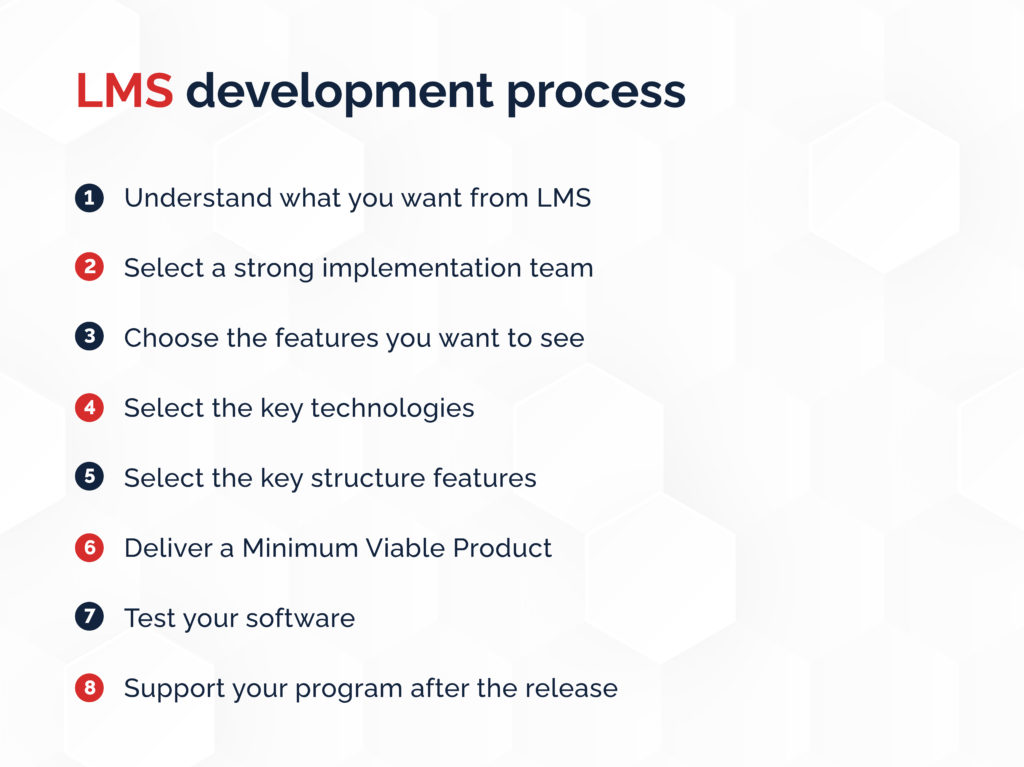
Step 1: Understand what you want from LMS
As this text shows, many types of LMS exist. Before starting any project in this field, make sure you have a general idea of the framework you want to pick. Lack of project definition is one of the key ways to prevent any success for your firm. Online education is different from office-centric solutions.
Step 2: Select a strong implementation team
The success of every project depends on the people behind it. You can never achieve strong results without investing in a good team. Pick the individuals who know the best practices of LMS development and give them a clear description of the things you need. Getting some outsourcing company for such a goal is often a good option.
Step 3. Choose the features you want to see
Even within the particular LMS types, the features can differ. Clearly define the things your company needs. A cryptocurrency business, for example, may require some mathematics modules to teach students how to manage financial issues of all types. Define your goals and tell the development team what they should add.
Step 4. Select the key technologies
Many platforms are available for LMS development. If you need something mathematics-centric, choose C/C++. A platform working with many people and not requiring any complex calculations may benefit from Node.js. Always consider your goals while choosing a development option.
Step 5: Select the key structure features
Functions alone can’t be sufficient for good LMS decision-making. You should also choose the structure behind your program. A lecture platform may need to highlight the summaries of the materials and some videos. A more practical course should focus on problem-solving.
Step 6. Deliver a Minimum Viable Product
Once you have a definite vision of your project, it’s crucial to see if it makes sense. The best practice for this goal is the creation of an MVP. You should deliver a program incorporating all key features making it valuable. A set of tests should then decide if further investments into this area make sense regarding business.
Step 7. Test your software
The moment you ensure the viability of the concept, refine it. Add all the other supporting features (for instance, online testing) and then start working on the removal of the bugs. A release version must be sufficiently stable to prevent any significant downtime.
Step 8. Support your program after the release
A complete project isn’t the end of development. Yes, its support will take fewer resources. Still, you may have some new needs due to new business processes. User-related bugs will also inevitably arise. Leave at least a developer or two on a project to deliver some positive changes after the release. Users appreciate such treatment: this method is the best way to gain positive long-term feedback.
Cost of Learning Management System Development
LMS systems can greatly differ in their scale. Hence, the prices you encounter will depend on the scope of your ambition. Still, we can highlight some common trends in modern development. The existing data shows that you can expect the cost between 40000 to 55000 dollars for a project with basic features. Further development may cost more but many projects can cut funds for some options and prioritize others, making this price a good benchmark for your expectations. Highly ambitious projects aimed at gigantic audiences, however, can easily reach million-dollar costs. The figures here are the average many companies on the market encounter.
What Are the Core Actions for Choosing Reliable LMS Contractors?
It’s not enough to know how to build an LMS. One should also focus on choosing reliable contractors for this goal. So, what are the actions you can focus on in the presented case? Let’s review them:
- Analyze your business requirements: the first thing you need to outline is the goal of custom software development. We recommend clearly outlining the project requirements and the relevant tech stack for it. This is essential for further stages of partner choice.
- Review your business resources: the reason it’s crucial to have at least an approximate understanding of your project is simple. This knowledge will help you understand how far you can go with a particular project. Every company has only a limited set of resources. Some businesses have enough expertise for in-house development. Others need outsourcing teams. The cost of development is also a major influence. Knowing your inputs and potential outputs before the development stage is the core way to avoid excessive expenditures.
- Select a list of several companies according to your requirements and resources: once you understand your inputs and outputs, outline a set of must-have features for your partner. Most likely, this action will lead to the appearance of various candidates. Contact them all and learn more about their offerings.
- Choose the best candidate: after negotiations with numerous candidates, you’ll eventually arrive at a partner who will support your software development process the best.
In Conclusion
All in all, LMS development is a thing that can greatly benefit your company. We recommend all businesses consider investments in this technology. This material should be of great value: you know why these systems are necessary and how to develop LMS now. If you’re interested in the development of custom systems, our company can be a perfect choice for you. We work with a large number of software platforms and have experience with building LMS for other companies. Our company is especially potent at Node.js/JavaScript LMS development. If you seek a partner capable of developing products in these frameworks, we’re more than willing to help.
Address Keenethics, and we’ll provide you with qualified service.
FAQs
How can one define an LMS?
LMS stands for Learning Management System. These frameworks offer many tools for modern teachers and learners. It’s possible to offer large lectures, text materials, interactive courses, tests, and communication platforms within them. If you’re searching for a learning nexus capable of covering many training goals, an LMS is the best choice for your firm.
What should I do to create an LMS?
A strong LMS requires several steps for creation. Above, we have a more detailed description; here, however, we want to outline the actions an average business should take concisely:
1) Clearly define the goals of creating an LMS;
2) Choose the type of LMS framework you wish to see;
3) Select the features necessary for your business;
4) Pick a team that can refine your ideas and deliver a full-scale project;
5) Create a minimum viable product to test the overall coherence of the idea;
6) Test your program thoroughly to prevent user protests related to lack of convenience;
7) Upon release, continue developing your product to fit the relevant feedback of the users.
What’s necessary for a good description of the project’s technical requirements?
You should above all describe your goals and the key features necessary for the business. Without a clear understanding of your objectives, development may become inefficient regardless of the technology. Clearly describe what you want to see (including structure) and then let our development team offer feedback on the adequacy of the requirements.
What are some successful examples of LMS products on the market?
Modern business analysts highlight several core companies in the presented market. Some of the most popular options include products such as Google Classroom, Moodle, 360 Learning, and Absorb LMS. Google Classroom is a school-centric solution that provides all the instruments necessary for modern schools. In turn, Moodle is an open-source online learning management system used to design different types of courses. Today, it’s very popular in universities and for social learning, but we know that many companies are using the platform for corporate training, too. 360 Learning and Absorb LMS are proprietary solutions that focus on the most advanced features of effective learning management systems. They also include some aspects of LXPs, too. These products should be of interest to companies that want to use AI.
What are the core reasons to use an LMS?
Many articles discuss how to build a custom learning management system. However, it’s not always clear why use one in the first place. Here’s the list of core motivations to invest in such platforms:
• Creating a centralized learning hub for your business
• Enabling access at any time and from any location
• Streamlining content management through digital tools
• Scaling training solutions with your business growth
• Automating administrative tasks, such as business analysis
• Personalizing learning paths
• Improving tracking and automating reporting capabilities
• Boosting employee collaboration and communication
• Promoting advanced assessment scenarios
• Optimizing compliance and certification management
• Minimizing training costs
• Improving employee engagement through non-standard education methods
• Streamlining onboarding
• Ensuring long-term professional development
• Guaranteeing integration with other systems
What’s the average development time for an LMS?
Even though we can’t tell how much time the development of your project will take, our experience highlights several important facts in this regard. Smaller and medium projects typically take between two and five months for design process and development, depending on their scope and the complexity of the involved features. In turn, larger projects may take the developers a year or longer due to complex user engagement features and third-party integration. You can contact our team to learn more about the average development times for your business. We’ll analyze your requirements and offer our input. Often, long development time isn’t a problem: we know how to create an LMS in parts by using the MVP approach.
Why choose Keenethics as an LMS development company?
Keenethics is a perfect software development company for creating LMS solutions for three reasons. Firstly, our company has more than 8 years of experience in the market. Our developers and project managers have already completed a tremendous number of projects over this period. Secondly, we have unique expertise in the edtech sector. Our company has developed multiple solutions in this field, which include products such as Brainable and SelfLeaders. We know how to create an LMS because we’ve already engaged with this type of product. Lastly, our team has many great experts with significant experience in the IT sector. As a result, we can bring your project from concept phase to completion very fast.


